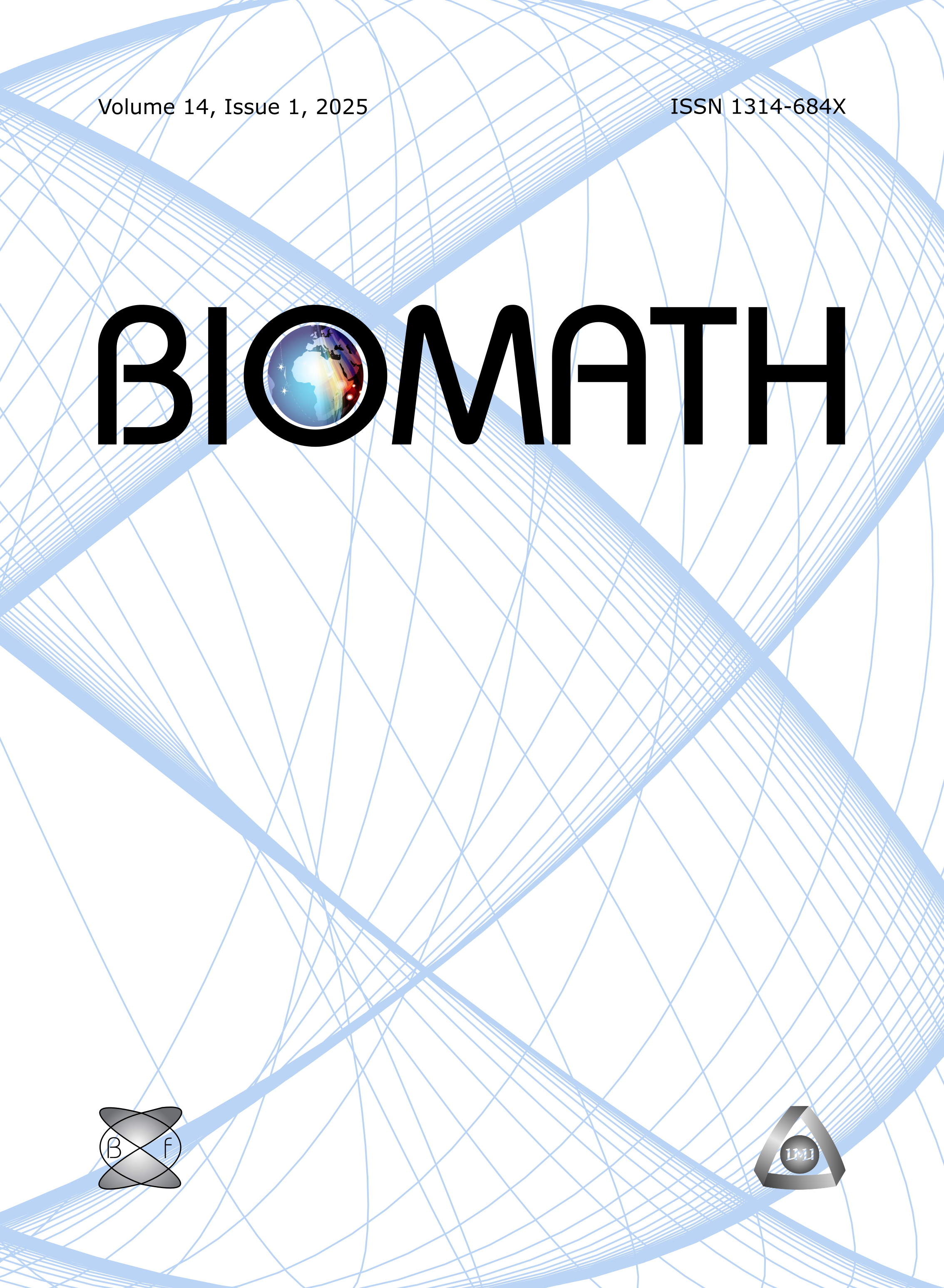How Compressibility Influences the Mechanical Bidomain Model
DOI:
https://doi.org/10.11145/j.biomath.2014.11.171Keywords:
biomechanics, mechanical bidomain model, mechanotransduction, pressure, remodelingAbstract
Compressibility influences the mechanical bidomain model describing the elastic properties of the tissue. In this model, the displacements of the intracellular and extracellular spaces are analyzed individually, and differences in these displacements give rise to membrane forces. In our present analysis, two length constants are associated with the membrane spring constant; one contains the shear moduli and the other contains the bulk moduli. The analytical solutions in our examples indicate that the monodomain part does not contribute to the membrane forces. Accounting for compressibility has its largest impact on the intracellular and extracellular pressures. The bidomain contribution to the pressure obeys the Helmholtz equation rather than Laplace’s equation. This model helps us to estimate the membrane forces that cause tissue remodeling and mechanotransduction.Downloads
Published
Issue
Section
License
The journal Biomath is an open access journal. All published articles are immeditely available online and the respective DOI link activated. All articles can be access for free and no reader registration of any sort is required. No fees are charged to authors for article submission or processing. Online publications are funded through volunteer work, donations and grants.
Authors who publish with this journal agree to the following terms:
- Authors retain copyright and grant the journal right of first publication with the work simultaneously licensed under a Creative Commons Attribution License 4.0 that allows others to share the work with an acknowledgement of the work's authorship and initial publication in this journal.
- Authors are able to enter into separate, additional contractual arrangements for the non-exclusive distribution of the journal's published version of the work (e.g., post it to an institutional repository or publish it in a book), with an acknowledgement of its initial publication in this journal.
- Authors are permitted and encouraged to post their work online (e.g., in institutional repositories or on their website) prior to and during the submission process, as it can lead to productive exchanges, as well as earlier and greater citation of published work (See The Effect of Open Access).

